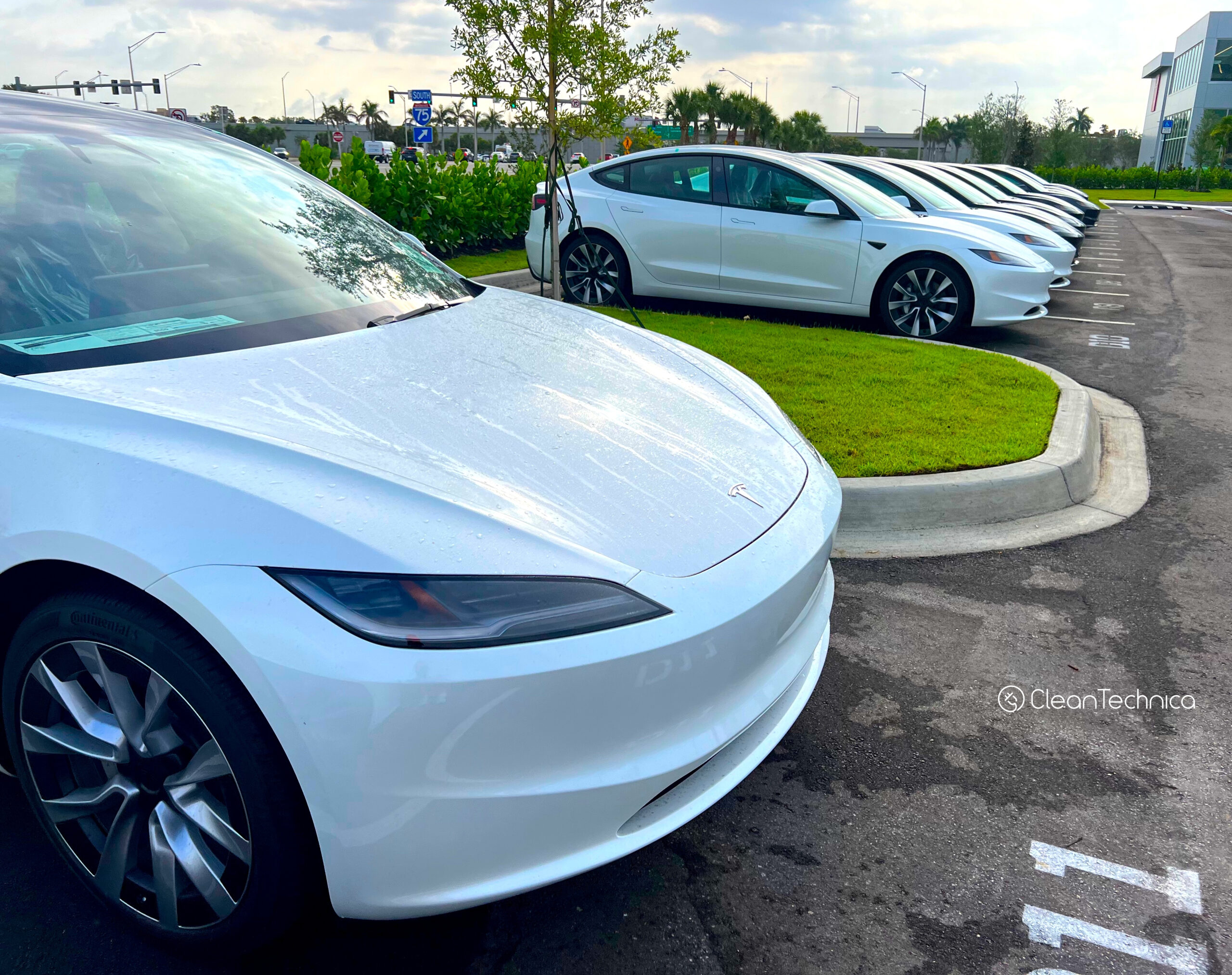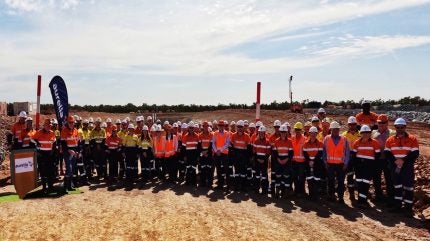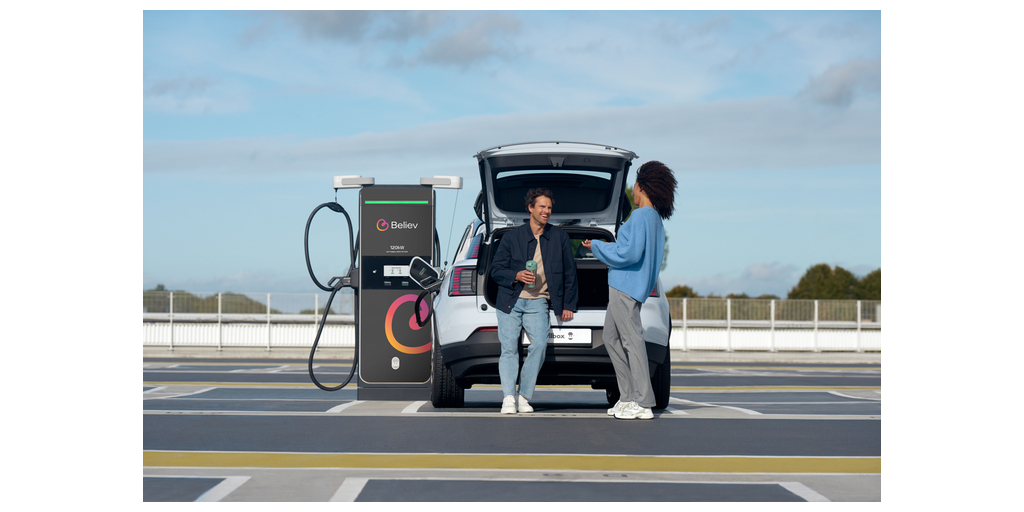Sign up for daily news updates from CleanTechnica on email. Or follow us on Google News!
The story of BYD began in the 1990s, when founder battery scientist Wang Chuanfu thought he saw an opportunity to start a rechargeable battery company to challenge Japan’s dominance in that industry. He began by focusing on batteries for mobile phones and power tools, but in 2003 he decided to pursue cars. Wang’s battery and manufacturing innovations, cushioned by China’s EV friendly government policies and the scale of its domestic auto market, helped BYD do what Tesla, Ford, Volkswagen, and the rest of the auto industry have not been able to do — build an affordable electric car for the masses and make money doing it, Bloomberg says.
That approach is similar to what Japanese and South Korean automakers like Toyota, Honda, and Hyundai have used to become global enterprises. Like them, BYD started out with cheap cars but moved up the scale, leveraging China’s muscular industrial policy, lower costs, and more efficient manufacturing. By contrast, Tesla started by making expensive luxury cars to compete with the likes of Mercedes, BMW, and Audi. The theory, according to Elon Musk’s “super secret master plan,” was to use the profits from those early cars to pay for the development of less expensive models.
Since introducing a new battery technology in 2020, BYD has gone from being an also-ran in China’s crowded car market to cracking the top 10 automakers in the world. It has unseated Volkswagen from its decades-long position at the top of China’s sales charts. Volkswagen’s fall from grace has led to economic and political ramifications in Germany.
BYD Is Selling Cars In 95 Countries
After increasing its annual sales in China to 3 million cars in only three years, BYD is now exporting to 95 foreign markets, including 20 new ones this year. One of those new markets is Malta, a country of just over half a million people where the new car market is just 7,000 cars a year. BYD is happy to focus on emerging markets and countries with no domestic auto industry to defend.
BYD is also following the path created by Toyota, Honda, and Hyundai to start with inexpensive imports, then build factories in those foreign markets. BYD has recently opened or announced plans for assembly plants outside China in 10 countries on three continents. The speed and scope of this expansion has caught the global auto industry off guard and triggered protectionist tariffs in the US and EU. Policymakers fear Chinese companies such as BYD will, in the words of Elon Musk, “demolish” their domestic automakers.
As BYD makes its global push, it is facing bipartisan anti-China sentiment in Washington that echoes the Japan Inc. hysteria of the 1980s, when the US feared being eclipsed as an economic superpower. The concern is that, as with solar panels and steel, electric cars are part of China’s larger economic strategy to amass political power through industrial and technological supremacy. China is making no secret of its intentions and is succeeding quite well bringing them to fruition. According to a recent study by Germany’s Kiel Institute for the World Economy, BYD receives “particularly high subsidies,” and China as a whole spends anywhere from three to nine times more than other democratic, market-based economies on subsidies.
BYD is hoping to transcend geopolitics through the appeal of a plug-in hybrid sedan that can go 1,200 miles without stopping at a pump or a charger. Stella Li, BYD’s executive vice president and the face of its global expansion, says she wants consumers to see BYD as “a technological pioneer in changing the world. Just like when you are using an iPhone, you may not think it’s from a particular country. It’s just part of your life.”
China’s Industrial Policy
Like many Chinese executives, Li bristles at the notion that BYD owes its success to government largesse and calls subsidy accusations “completely groundless.” BYD is so formidable because it’s emerged victorious from China’s brand of state-led capitalism, which weeds out weak or inefficient players by forcing them to compete in a protected, carefully calibrated sandbox. For Li, that victory was hard won, the result of grit and determination. “They cannot beat us and can only attribute our success to other factors,” she says. “We’d rather just show our muscles than make explanations to them. When everybody else is having a work-life balance, we only have work balance.” Sounds like a fun place to work.
Still, BYD has benefited from government incentives, even if the full extent of them is opaque. “There is not a single major ‘private’ company that succeeds in China without the backing of the Party,” says Michael Dunne, a former GM executive who spent more than two decades working in Asia. BYD is part of a wave of Chinese automakers fulfilling a government directive to combat a domestic economic slump by cranking up exports. But its bigger goal is localizing manufacturing around the world, so it can sidestep tariffs and become a household name in each market. “No company in recent memory has expanded globally at such a rapid clip as BYD,” Dunne says. “It sees a need to strike while the iron is hot, to move as fast as possible before others catch up.”
The Rise Of BYD
A year after taking BYD public in 2002, Wang bought a majority stake in a failing state-run car company, Xi’an Qinchuan Auto Co. At the time, Wang didn’t even know how to drive, but he saw cars as a natural extension of BYD’s battery business. In 2004 he gave a speech at the Beijing auto show declaring his intention to use batteries to change the future of the auto industry. In 2008, BYD became the first company to produce a plug-in hybrid at commercial scale. Although the engineering was impressive — its battery range was greater than the Chevrolet Volt — the F3DM looked like a stale knockoff of the Toyota Corolla and failed to gain traction in either the US or China. The all-electric E6, which Wang touted at the Detroit auto show the following year, was later dinged in reviews for its “crude” handling, inferior range and $58,000 sticker price. Wang continued to pour money into product development, eventually building 11 R&D centers and a vertically integrated company that made everything including batteries, solar panels, printed circuit boards and semiconductors.
Wang was one of the first to see the market potential of lithium iron phosphate batteries. The BYD Blade battery was one of the first commercially produced LFP batteries for electric car and was introduced in 2020 when battery fires were very much in the news and threatening to slow the momentum of the EV revolution. The Blade battery did not have the energy density of other battery chemistry, but it was remarkably resistant to thermal runaway, even when overcharged or hit with an ax. LFP batteries are now used in nearly half of all new electric cars
Tariffs
Last spring, as Joe Biden was announcing steep new tariffs on Chinese-made vehicles, Stella Li was in Mexico City, where she unveiled the BYD Shark, a midsize electric pickup truck with a range extender gasoline engine that can tow up to 5,500 lb. The Shark has a combined range of 520 miles and its onboard generator that can provide electrical power at campsites or worksites. It was the first vehicle from the company unveiled outside of China. The Shark is not intended for the US market. Instead, it is meant to appeal to Mexicans who want to tow a boat or a camper for a weekend trip, but it is also aimed at Brazilian farmers and ranchers and Aussie construction workers who want a battery powered pickup truck without worrying about charging in rural areas.
Bombarded by questions about the new US tariffs at the event, Stella Li focused on the technology inside the Shark. “It’s a game changer,” she told Bloomberg News. “It means BYD is turning … to become a global company.” Since then, BYD has unveiled a so-called extended range EV with a combined range of more than 1200 miles. When asked about plans to enter the US car market, Li says any attempts to keep BYD and other Chinese carmakers out of the country are unnecessary, because none have plans to go there anyway. The official line is that, given the volatile relationship between the US and China, a US push is off the table. But there are hints of a longer term strategy at play.
Things in Europe aren’t looking much better. Sales in the EU, the world’s third-biggest car market and a huge profit opportunity given BYD’s low-cost base, got off to a sluggish start this year after the German government scrapped EV subsidies. But when BYD encounters political obstacles, it’s quick to get creative, at times with an assist from the Chinese government. In July, exactly one day after the EU slapped a provisional tariff on Chinese EV imports, news broke that BYD would build a $1 billion plant in western Turkey, which has a customs union agreement with the EU that would make BYD cars built there exempt.
With Li leading the way, BYD has spent lavishly to raise its profile in Europe, where it now has flagship stores in London’s Mayfair district, the Piazza del Duomo in Milan, and the Centre Pompidou in the heart of Paris. This past summer, BYD was a major sponsor of Euro 2024, the biggest event on the continent this year aside from the Olympics. But the company sold only 23,787 vehicles in the first eight months of the year, according to Jato Dynamics, about 1% of European car sales. That’s much improved from last year but modest compared with growth in emerging markets such as Thailand and Brazil.
Although BYD is stymied in the US, Li is positioning BYD well geographically should there be a policy change. In July, Li announced a partnership with Uber. The two companies will offer financing on 100,000 BYD cars to ride-share drivers around the world, including Europe, Latin America, and Canada, even though Canada has joined the US in imposing a 100 percent tariff on Chinese-made cars. BYD insists it has no intention to enter the Canadian retail car market, but those Uber vehicles will be seen by lots of people in Canada. Think of BYD as the camel that sticks its nose under the tent and is soon inside.
BYD’s protestations that it has no interest in the US market strike some as disingenuous. Flavio Volpe, head of Canada’s Automotive Parts Manufacturers’ Association and a vocal proponent of tariffs on Chinese imports, told Bloomberg, “Anybody that says they don’t have designs on the US market” is lying. “There’s no point in crossing an ocean to try to sell into a 2 million car market, when the 17 million car market is an hour away.” Alexander Edwards, president of Strategic Vision, has surveyed car shoppers in the US and China. “Here in America, where you’ve got the biggest pushback for EVs and China as a whole because of the political stance, 1 in 5 still say, ‘Yeah, if you had a Chinese vehicle for sale, I’d love to come check it out, That’s a good starting point,” he says. CleanTechnica interviewed BYD founder and CEO Wang Chuanfu a couple of times before the COVID pandemic (in 2016 and 2018), and he didn’t explicitly say so but hinted that they had an eye on the US when asked about it. Naturally, when you have some of the best and most competitive cars on the market, you know they can sell in the US too if given the opportunity.
The Takeaway
In 2023, UBS did a teardown of the BYD Seal sedan, a challenger to the Tesla Model 3, and found that about 75% of the parts were made in-house, giving BYD a 25% cost advantage over American and European carmakers. That sort of vertical integration is consistent with the approach to manufacturing adopted by Tesla, and it means legacy automakers, who tend to rely more on outside suppliers, have a tough row to hoe if they want to compete with BYD or Tesla.
Here’s a challenge for readers. I have $5.00 that says BYD will be selling passenger cars and/or trucks in the US by 2030. Anyone want to take my bet?

 Chip in a few dollars a month to help support independent cleantech coverage that helps to accelerate the cleantech revolution!
Chip in a few dollars a month to help support independent cleantech coverage that helps to accelerate the cleantech revolution!
Have a tip for CleanTechnica? Want to advertise? Want to suggest a guest for our CleanTech Talk podcast? Contact us here.
CleanTechnica uses affiliate links. See our policy here.
CleanTechnica’s Comment Policy




